You only pay 15,00% deposit now
Free cancelation 30 days before check in
7 Day Yoga, Meditation, Nature: Disconnect and Arise
-
Activities
Yoga
Yoga
Yoga
Meditation
Ayurveda
Hiking & trekking
-
Minimum no. of participants
4
-
Suitable for
All levels
-
Accommodation
Villa
-
Length of retreat
7 nights
-
Meals included
Breakfast
-
Capacity
up to 8 persons
-
Main instructor language
English
Instructors also speak
Spanish
Welcome to a unique retreat, immersed in the enchanting energy of a volcanic island, a magical place where disconnection becomes a rediscovery of peace and well-being. This retreat is designed to offer you an extraordinary experience, focusing on several key elements that embrace the essence of the island's powerful nature. Here's what you can expect:
You will be enveloped by the unique energy of this volcanic island, an environment that conveys a sense of natural power and ancient wisdom. Let yourself be enveloped by the telluric force that characterizes this place, rediscovering the connection with the earth and the flow of vital energy.
In this corner of paradise, disconnection becomes a ritual of renewal. Far from everyday distractions, you will have the opportunity to unplug, abandon your worries and completely immerse yourself in the relaxing atmosphere of the island.
Through yoga practices guided by expert teachers, you will discover the power of achieving a state of inner peace. Physical wellbeing will be at the heart of the experience, with sessions aimed at releasing tension, improving flexibility and reconnecting mind and body.
You will nourish your body with healthy foods and have the opportunity to experience detoxification practices, freeing the body from accumulated toxins and allowing a feeling of lightness and vitality.
Through in-depth workshops and introspection sessions, you will have the opportunity to fully explore your yoga practice and gain a greater understanding of yourself. This moment of reflection will be guided by experts who will accompany you on your personal growth journey.
You will explore the wild beauty of the island, immersing yourself in its volcanic nature. Adventurous trekking and moments of contemplation will be the bridge between your yoga practice and the majesty of the natural elements.
Your path towards total well-being will be enriched by a unique sensorial experience: the Ayurvedic massage, a precious element included in our retreat. This ancient Indian treatment is based on the principles of Ayurveda, a thousand-year-old system that seeks balance between mind, body and spirit.
Thanks to expert Ayurvedic therapists, your body will be enveloped in aromatic and nourishing oils, specially selected for your individual needs. Ayurvedic massage is not just a pampering for the senses, but a practice that aims to restore the body's energetic balance, dissolving accumulated tensions and promoting the circulation of vital energy.
This treatment will offer you a moment of pure indulgence and relaxation, allowing you to abandon daily tensions and fully immerse yourself in your experience of disconnection and renewal. Ayurvedic massage, with its healing and regenerating properties, integrates harmoniously into the philosophy of our retreat, offering you a further tool to achieve a state of total well-being, in harmony with the powerful volcanic nature that surrounds this splendid island.
This retreat is more than just a holiday; it is a profound journey towards your total well-being, allowing you to connect with the force of nature, with yourself and with a feeling of newfound peace. Welcome to an experience that goes beyond the surface, embracing the true essence of this wonderful volcanic island.
Yoga
Vinyasa or flow yoga is a type of yoga where a series of postures or asanas are synchronized with the breath; that is, breathing and movement come together. You flow and evolve throughout the practice. Vinyasa is a type of dynamic yoga that makes you move your body with conscious breathing. In fact, some say that it is a moving meditation. VI: place yourself in a certain way (asana or posture). NYASA: meditate by focusing your attention on something specific (breathing). FLOW: to flow. So it could be translated as flow while you move and breathe. The sun salutation, for example, is a type of vinyasa, where the asanas are matched with each inhalation and exhalation; that makes a series of consecutive postures linked by the breath create a fluid movement. Specifically, the sun salutation A has 9 vinyasas or movements). Unlike hatha yoga, in vinyasa or flow yoga the postures are held for less time. Practice It is “a complete method for physical and spiritual development.” This yoga system is mainly characterized by the synchronization of breathing with the movement of the body. Each of the important yoga asanas (postures) is practiced with different and elaborate movements to enter and exit the asanas. In addition, each posture is linked to the next through a dynamic transition harmonized by breathing. All vinyasa yoga practices, both Ashtanga and Power, as well as Flow Yoga or Vinyasa Flow, involve movement from posture to posture, maintaining the continuity of the breath. In the words of Srivatsa Ramaswami: “The mind attentively follows the slow, smooth and controlled breath, and the union of the body and mind takes place with the act of breathing as a harness.” Ultimately, what is vinyasa yoga? Well, a system of synchronized movements and breathing, a yoga method in which the postures are chained in an intelligent sequence that seeks to achieve benefits both physically, mentally, emotionally and spiritually. What is Vinyasa Yoga good for? Vinyasa practice has different benefits: Physically, it improves flexibility at the muscular level and favors its strengthening and toning. It also helps make bones stronger. Due to this fluidity of movement with breathing, it helps us to improve breathing, relieving respiratory problems such as asthma, allergies… Mentally, it decreases stress levels, bad mood… promoting relaxation. It also helps to fall asleep. Practicing vinyasa, and yoga in general, you will know what your limits are, you will give value to the things you have and you will be happier.
- Vinyasa Yoga
Yoga
The word hatha is made up of two words, ha and tha. The word ‘ha’ means Sun and ‘tha’ means Moon. Together, the word means to create a balance between the sun and the moon energies present in an individual. The aim of this Yoga style is creating a harmony between the solar (Pingala) and lunar (Ida) energies within us so as to help us to achieve a higher consciousness in life. It is the science of initializing the central Nadi, Sushumna which leads to the path of enlightenment. Practice The practice of hatha yoga comprises of elements related to both behavior and practice. As per the hatha yoga texts, a yogi has to possess certain characteristics in order to become successful. Those characteristics involve enthusiasm (utsaha), courage (sahasa), patience (dhairya), essence of knowledge (jnana tattva), resolve (nishcaya) and soºlitude (tyaga). When talking about the western culture, hatha yoga is mainly about the asanas. But in India, it goes beyond being just an exercise system and integrates other aspects such as diet, cleansing, ethics, meditation, pranayama, etc. a part of it. What is a Hatha Yoga class like? Hatha and Hatha Yoga are used in modern times as a broad and generic term for yoga which does not have a specific style attached to it. A typical class will be relatively gentle, slow and good for beginners, but it is difficult to know what a specific class will be like before attending. This practice typically starts with some gentle warm-ups, continues to a sequence of poses, and end with 5-10 minutes of relaxation in corpse pose. A class will often begin and end with a short seated meditation. The class often concludes with students bringing their hands together in prayer position while bowing and saying Namaste. Hatha classes are usually 60 to 90 minutes long and may also include pranayama breathing exercises as a separate practice or integrated with the yoga postures. What is Hatha Yoga good for? Hatha Yoga is usually taught as a householder path with a focus on the physical attainment of the poses. Hatha practices are designed to align, cleanse and calm your body, mind, and spirit in order to achieve deeper states of meditation and spiritual realization. A regular practice can improve strength, stamina, flexibility, range of motion, and balance; reduce stress; promote mental calm; and provide many other therapeutic benefits as well. The many different styles or schools of Hatha Yoga have more specific benefits.
- Hatha Yoga
Yoga
Yin yoga is the perfect complement to yang. These types of yoga are adapted to each other with a final purpose, to balance body and mind through our two dualities: the internal, feminine, dark and passive energy, and the external, masculine, more luminous and active energy. Both inhabit everything that surrounds us and both existences need the other to be. Yin and yang are concepts that derive from Taoist philosophy. In this way we can distinguish between yang yoga practices, more dynamic or active, such as vinyasa yoga, hatha yoga, power yoga… And yin classes, with a much slower and more passive rhythm. Practice Yin yoga is a slow practice of asanas, whose postures are normally performed on the floor, and are held passively for a period of time between approximately 2 and 5 minutes, thus achieving a broad stretch, calming our mind and our body. Thanks to this delicate practice we can achieve pleasant sensations of well-being, perfect for disconnecting, enjoying and relaxing. It is about maintaining stillness and moving slowly between posture and posture. This is not to say that yin practice is effortless. It is really difficult to maintain yoga postures for so long. It is gravity that acts on our body, and stretching manages to reach the deepest layers thanks to the passive activation of connective tissues.The energy channels of the meridians, nerves and the blood system are also worked on, which you may know if you are familiar with traditional Chinese medicine or acupuncture. What is a Yin Yoga class like? In Yin Yoga, we hold most poses between 5 and 10 minutes. This is in contrast to the dynamic forms like Ashtanga Vinyasa and Vinyasa Flow, where the poses are held for 5 to 10 breaths, and we constantly move in and out of the poses. Even though Hatha Yoga is much more static, most poses (for beginners) are held up to a maximum of 3 minutes. So, in Hatha Yoga, too, we usually do not hold the poses as long as in Yin Yoga. When we hold a pose for a longer period, we bring the stretch to the yin tissues, which are the deeper tissues such as the tendons, fascia, ligaments, and the other connective body tissues. Our yin tissues are less vascular (supplied with blood) and less elastic, and therefore need more time to stretch. When stretched regularly, it increases the overall flexibility, circulation, and range of motion in the joints and ligaments. In dynamic styles, such as Vinyasa Yoga, and modern Hatha Yoga, the movement makes the muscles take the main load and stretch. Muscles are yang tissues; they are quick to warm up and stretch but also quick to cool down and rebound. That is why, if you do not practice for a few days, you see a big decline in flexibility and strength. So, if you practice only dynamic forms of exercise or yoga, you will gain muscle strength, but not necessarily a wider range of motion. To have a healthy range of motion around our joints, many of us need to also stretch the deep connective tissue and the joints. According to Paul, Yin Yoga is a complementary practice, not a substitute for the more yang exercises. What is Yin Yoga good for? Not only does it help us to passively gain flexibility by holding the asanas, but it also acts as a meditation thanks to slow and conscious breathing during them. We will be able to find a space of peace in practice, recover mobility and prevent injuries derived from other sports disciplines, since it is one of the styles of yoga that will significantly increase our range of mobility. It is a restorative yoga that will allow us to end the session with a feeling of joy and well-being. It is essential not to feel “pain” during the practice, although it is normal to have some “discomfort” at first. It can also happen that certain sensations arise in a yin session, not only physical but emotional, my recommendation is to let them flow, if you feel like crying, smiling, sighing… let them continue their process while you breathe and loosen up without judging yourself, at the end you will see How do you feel great relief? Sometimes yin yoga allows us to lighten “backpacks” that we carried with us without realizing it. It is a safe practice that respects the anatomy of each yogi and can be done at any age and in any physical condition, since the asanas are adapted to each practitioner with the use of blocks, belts, bolsters, blankets, and other supports. Passively increases flexibility. – Relaxes the central nervous system by working stillness and calm in the postures. – It counteracts the active and dynamic lifestyle of our day to day, the perfect complement to the more active practice of yoga or highly active sports, and we can resort to it in times of fatigue or stress. – It works on the fascias, mobilizing them delicately while achieving a wide range of movement, and with it bodily, mental and emotional opening, as well as general well-being as if you had just received a massage. – It relaxes tensions, loosens up and allows you to be in the here and now as it is a regenerative practice with minimal muscular effort. – It mobilizes prana or vital energy and this has a positive impact on our body, organs and tissues. – Helps concentration and body awareness. – It favors self-practice, since being passive and long-lasting postures, we can repeat them without the need for a teacher to guide us. The benefits can be perceived from the first practice and surely at this point you are wanting to try…
- Yin Yoga
Meditation
Meditation has been practiced for thousands of years. Originally the purpose of meditation was to help deepen one’s understanding of the sacred and mystical forces in life. Today, meditation is commonly used for relaxation and stress reduction and can actually produce a state of deep relaxation and a calm mind. During meditation, you focus your attention and eliminate the flow of confusing thoughts that may be filling your mind and causing you stress. This process can result in an enhancement of physical and emotional well-being. The benefits of meditation Meditation can give you a sense of calm, peace, and balance that can benefit both your emotional well-being and your general health. You can also use it to relax and deal with stress by focusing your attention on something that calms you down. Meditation can help you learn to stay centered and maintain inner peace. These benefits do not end when the meditation session ends. Meditation can help you go through the day more calmly and manage the symptoms of certain medical conditions. Physical and emotional well-being When you meditate, you can clear the information overload that builds up every day and contributes to your stress. The emotional and physical benefits of meditation include: Have a new perspective on stressful situations. Acquire stress management skills Increase self-awareness Focus on the present Reduce negative emotions Increase imagination and creativity Increase patience and tolerance Lower heart rate Lower blood pressure at rest Improve sleep quality Meditation and diseases Anxiety Asthma Cancer Chronic pain Depression Heart disease Arterial hypertension Irritable bowel syndrome Sleeping problems Tension headaches Be sure to talk to your health care provider about the pros and cons of using meditation if you have any of these conditions or other health problems. In some rare cases, meditation could worsen symptoms associated with certain mental health conditions. The ways to meditate can be: Meditation is a general term for the many ways to achieve a state of relaxation. There are many types of meditation and relaxation techniques that have meditative components. They all share the same goal of achieving inner peace Guided Meditation. It is sometimes called guided imagery or visualization; With this method of meditation you form mental images of places or situations that relax you. Try to use as many senses as possible, such as smells, visual images, sounds, and textures. A guide or teacher can lead you through this process. Meditation with mantra. In this type of meditation, you silently repeat a calming word, thought, or phrase to avoid distracting thoughts. Mindfulness meditation. This type of meditation is based on being attentive or having a greater awareness and acceptance of living in the present moment. In mindfulness meditation, you expand your conscious awareness. You focus on what you feel during meditation, such as the flow of your breath. You can observe your thoughts and emotions, but you must let them pass without judging them. Qigong. This practice usually combines meditation, relaxation, physical movement, and breathing exercises to restore and maintain balance. Qi gong is part of traditional Chinese medicine. Tai Chi. It is a form of training in a soft Chinese martial art. In tai chi you do a series of postures or movements at your own pace and in a slow and graceful manner while practicing deep breathing. Transcendental Meditation. Transcendental meditation is a simple and natural technique. In this form of meditation, you silently repeat a certain mantra, such as a word, sound, or phrase, in a specific way. This form of meditation may allow your body to enter a state of deep rest and relaxation, and allow your mind to achieve a state of inner peace without worry, without needing to concentrate or exert yourself. Yoga. You do a series of postures and controlled breathing exercises that stimulate the flexibility of the body and mental calm. By performing poses that require balance and concentration, you are encouraged to focus less on your busy day and more on the moment. Elements of meditation The various types of meditation may include different elements to help you meditate. These can vary depending on who guides you or who teaches the class. Some of the more common elements in meditation include: Focus attention. Focusing attention is generally one of the most important elements of meditation. It is what helps free your mind from the many distractions that cause stress and worry. You can focus your attention on things like a specific object, an image, a mantra, or even your breath. Relaxed breathing. This technique involves deep, even breathing, using the diaphragm muscle to expand the lungs. The purpose is to slow your breathing, take in more oxygen, and reduce the use of the muscles in your shoulders, neck, and upper chest when breathing, in order to breathe more efficiently. A quiet place. If you are a beginner, practicing meditation will be easier if you are in a quiet place with few distractions, including no TV, radio, or cell phone. With more experience with meditation, you may be able to meditate anywhere, especially in high-stress situations when you will benefit most from meditating, such as in a traffic jam, in a stressful work meeting, or waiting in a long line at the Supermarket. A comfortable position. You can practice meditation sitting, lying down, walking, in other positions, or during activities. Just try to be comfortable so that you can get the most out of your meditation. Try to maintain good posture during meditation. Open attitude. Allow thoughts to pass through your mind without judging them.
view moreAyurveda
Ayurveda (Science of Life) is a medicine born in India 3,000 years ago that considers the body inseparable from the mind. Ayurvedic massage finds its precepts in the ancient Hindu texts that are the basis of Ayurvedic medicine: Sushruta and Charaka Samhita. The objective of these massages is to restore the balance of the organism, thus maintaining physical and mental health, and preserving the vital areas of the body (marma) by enhancing the natural defenses. The treatment is carried out in a relaxed and calm environment, adequately tempered and illuminated by the dim light of some candles, perfumed with essences and incense, and flooded with the spirituality of the music of the mantras. Its duration is approximately 60 minutes.This ancient art of massage activates blood circulation, tones muscles, is beneficial for the spine, brings positivity to the patient’s psychological state, calms the nervous system, and is effective against insomnia and anxiety problems.
view moreHiking & trekking
Volcán del Cuervo and Montaña Colorada Within our series of hiking routes in Lanzarote, we invite you to tour the Volcán del Cuervo, located right in the area of the island where the eruptions began in 1730, and the Montaña Colorada, where this intense period of flows concluded. Volcán del Cuervo The starting point to get to the Cuervo Volcano is in a parking lot on the LZ-56 highway, on the left if you are coming from the south or on the right if you are coming from the north. It is located 2.5 kilometers from Masdache and 3 from Mancha Blanca, just before the sign that tells us that we are entering the municipality of Tinajo. Here, on a blanket of volcanic ash that borders a badland valley, the path of this route begins, very comfortable and flat, which makes it suitable for all ages. Despite the aridity of the terrain, along the route we will paradoxically find a vegetal presence composed mainly of lichens, tabobos, tabaibas and verodes. Different informative signs about the geology of the area are found at various points on this path that will lead us to the volcano, having to skirt it in a northerly direction to the right to see the entrance to the crater. Once there, many sensations will captivate the hiker. The different reliefs, the impressive views of La Geria, the geological disorder that has resulted in whimsically shaped stones, and the extensive range of tones that colors the caldera under a sepulchral silence, captivate all those who visit it. To leave we will take the same route by which we have accessed and continue skirting this volcanic cone towards the west, being able to enjoy from there a beautiful panoramic view of the Timanfaya National Park, while we approach the east face, finally arriving at the parking lot where we started. Hiking through Montaña Colorada Very close to here, a kilometer and a half further on, we find the Montaña Colorada on the right. We can do this journey by car through the LZ-56 but also on foot, crossing the road and continuing in an easterly direction, passing through Montaña Negra and following a rofe path towards the north, through a route that will finally lead us to Red Mountain. Once in the eastern area of this cone, we can see a striking 30-meter volcanic bomb. As we skirt the north face, we can see an old volcano, Montaña Ortiz, and to the west the Las Nueces volcano. A few meters away we found the Montaña Colorada parking lot, where we would end the route. If we have left the vehicle next to the Cuervo Volcano, we would return to the road heading south to there. After this tour of the Los Volcanes Natural Park, we can go to La Geria, where we can continue the day enjoying this unique landscape and visiting many of the picturesque wineries found in the area.
view more
- Presentation
- Hatha Yoga / Vinyasa flow Practice
- Breakfast
- Stand Up Paddle lesson and excursion: theory and practice
- Lunch
- Free Time
- Yin Yoga Practice
- Dinner
- Hatha Yoga / Vinyasa flow Practice
- Breakfast
- Volcan del Cuervo and Montana Colorada trekking excursion
- Packed lunch
- Eco-sustainable activity for the Biosphere Reserve
- *Optional Chakra dance introduction and lesson
- Yin Yoga Practice
- Dinner
- Free time
- Vinyasa Yoga / Vinyasa flow Practice
- Breakfast
- Surf lesson in Caleta de Famara
- Packed lunch
- Free time
- Yin Yoga Practice
- Dinner
- Free time
- Hatha Yoga / Vinyasa flow Practice
- Breakfast
- Free Time
- Lunch
- * Optional introduction to Sup Yoga
- Free time
- Yin Yoga Practice
- Dinner
- *Optional Day in La Graciosa Island
- Vinyasa Yoga / Vinyasa flow Practice
- Breakfast
- Ayurvedic massage
- Lunch and free time
- Yin Yoga and Meditation Practice at sunset on the beach
- Dinner
- Free Time
- Hatha Yoga / Vinyasa flow Practice
- Breakfast
- Free time
- Lunch
- Free time
- Breath and Meditation Practice
- Vegetarian Barbecue
- Free time to share together
- Hatha Yoga / Vinyasa flow Practice
- Breakfast
- Free time
- Lunch
- * Optional: Workshop "What are the 7 Chakras and how to keep them in
- balance"
On the north-west coast of Lanzarote, Famara Beach House is situated just a short walk from the sandy beach in the charming fishing village of Caleta de Famara. Located on a beautiful fenced plot shared with a holiday apartment, the 200 m² holiday house consists of a living-dining room, a very well-equipped kitchen (including coffee maker and kettle), 3 bedrooms (2 with 2 single beds each and another with 1 bunk bed), as well as 2 bathrooms. The property sleeps 6 people. Additional amenities include Wi-Fi (fiber optics!), cable TV, a washing machine, a crib and a high chair. The outdoor area of the beach house is absolutely stunning: on the covered terrace, you will find a pool table and several lounge areas, all against the backdrop of the romantic cliffs of Famara, which attest to the natural beauty of the island. . In the outdoor area shared with the other apartment on the property, there is a large swimming pool lined with sun loungers which, thanks to a special glass cover, can be used all year round and regardless of the weather conditions. Relax in the shared pool and prepare delicious meals on the community barbecue for a fresh dinner. In the center of the fishing village, about 1.5 km or a 4-minute drive away, you will find a selection of supermarkets, shops, restaurants, bars and cafes. The best thing about the house's location, however, is its proximity to the beach: it is just a few meters down the path from your terrace and over the soft sand dunes to reach the beautiful Playa de Famara beach. Here you can walk along the shore at sunset and smell the salty ocean breeze.
There is covered parking on the property and there is additional street parking. Bed linen and towels are included in the price. The owners ask that guests cover the pool when not in use to prevent sand from entering the pool and to inform guests if they need to do laundry.
How to get there
Take LZ-2 from the Airport.
Follow the signs for LZ-2/Pto del Carmen/Playa Blanca and go to LZ-2.
At the roundabout, take the third exit towards Ctra. Arrecife to Tinajo/LZ-20
At the roundabout, take the first exit towards LZ-30
At the roundabout, take the second exit towards LZ-402
Drive on LZ-402.
Take C. Brezo de Mar towards C. Cascabelillo in Famara Urbanization.
Airport
Aeropuerto de César Manrique-Lanzarote - 25 km
Villa
On the north-west coast of Lanzarote, Famara Beach House is situated just a short walk from the sandy beach in the charming fishing village of Caleta de Famara. Located on a beautiful fenced plot shared with a holiday apartment, the 200 m² holiday house consists of a living-dining room, a very well-equipped kitchen (including coffee maker and kettle), 3 bedrooms (2 with 2 single beds each and another with 1 bunk bed), as well as 2 bathrooms. The property sleeps 6 people. Additional amenities include Wi-Fi (fiber optics!), cable TV, a washing machine, a crib and a high chair. The outdoor area of the beach house is absolutely stunning: on the covered terrace, you will find a pool table and several lounge areas, all against the backdrop of the romantic cliffs of Famara, which attest to the natural beauty of the island. . In the outdoor area shared with the other apartment on the property, there is a large swimming pool lined with sun loungers which, thanks to a special glass cover, can be used all year round and regardless of the weather conditions. Relax in the shared pool and prepare delicious meals on the community barbecue for a fresh dinner. In the center of the fishing village, about 1.5 km or a 4-minute drive away, you will find a selection of supermarkets, shops, restaurants, bars and cafes. The best thing about the house's location, however, is its proximity to the beach: it is just a few meters down the path from your terrace and over the soft sand dunes to reach the beautiful Playa de Famara beach. Here you can walk along the shore at sunset and smell the salty ocean breeze.
There is covered parking on the property and there is additional street parking. Bed linen and towels are included in the price. Pets are not allowed. The owners ask that guests cover the pool when not in use to prevent sand from entering the pool. Please inform the owner if you need to do laundry.
- Outdoor pool
- Garden
- Fully equipped kitchen
- Parking
- Free wifi
- Holistic treatments
- Outdoor terrace
- Outdoor exercise possibilities
- Dishwasher
- Linen & towels provided
- Massages
- Car rental services
- Outdoor yoga deck
- Air conditioning
- Washing machine
- TV
- Ayurveda therapies
- Surfboard and SUP rental
- Restaurant nearby
Delicious and fresh breakfast will be provided every morning.Our holidays are self-catering: we encourage our guests to go out and try out amazing cafes and restaurants with diverse offers. We strongly believe that eating out and trying out local cuisine is an experience on its own and a must when visiting this island. We provide our guests with a local guide to the best restaurants and cafes in town.
- Breakfast
- Coffee
- Water
- Tea
- • Breakfast and tea, coffes, infusions, water
- • 7 days shared bungalow villa accomodation
- • 2 daily Yoga practices
- • 1 Ayurvedic massage
- • Volcan del Cuervo and Montana Colorada trekking excursion
- • Surf class
- • Eco-sustainable activity for the Biosphere Reserve
- • Shared car for the week
- • Professional Photographer
- • Insurance Coverage During Sports Activities
- • Flights
- • *Optional Day in La graciosa island (ferry tickets and meditation class included) ***
- • * Optional introduction to Sup Yoga
- • * Optional Workshop "What are the 7 Chakras and ho how to keep them in balance"
- • * Optional introduction and chakra dance lesson
Free cancelation 30 days before check in
Guests will incur a fee 50% if they cancel their booking 15 days before check-in
Guests will incur a fee 100% if they cancel their booking 5 days before check-in



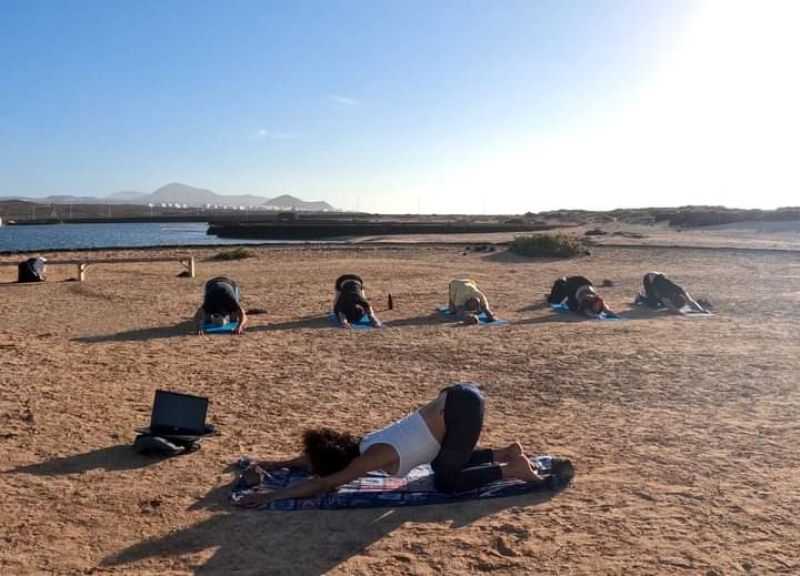


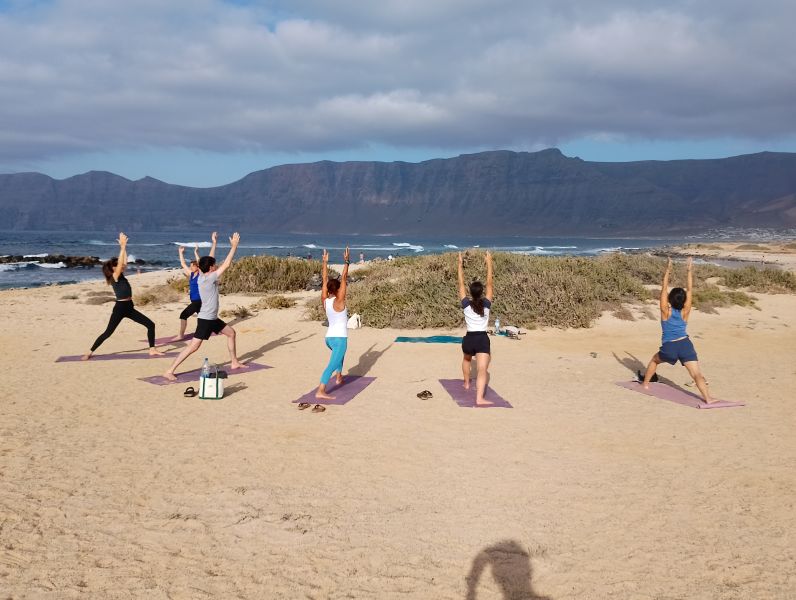
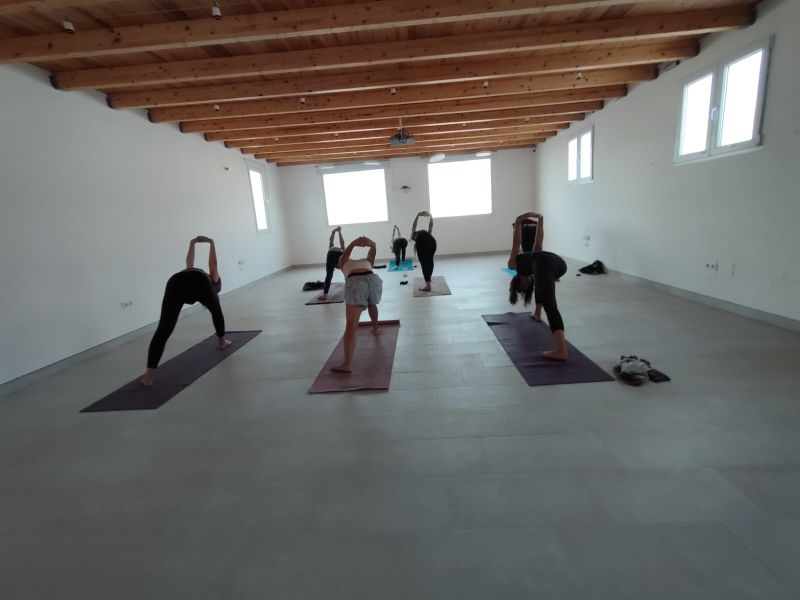
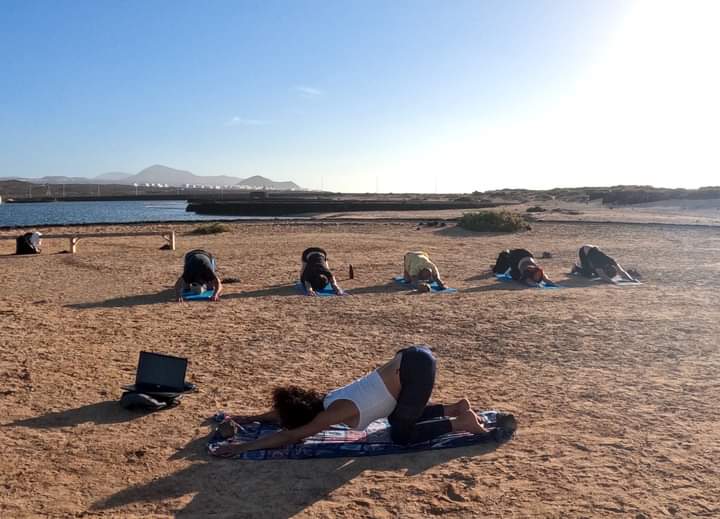
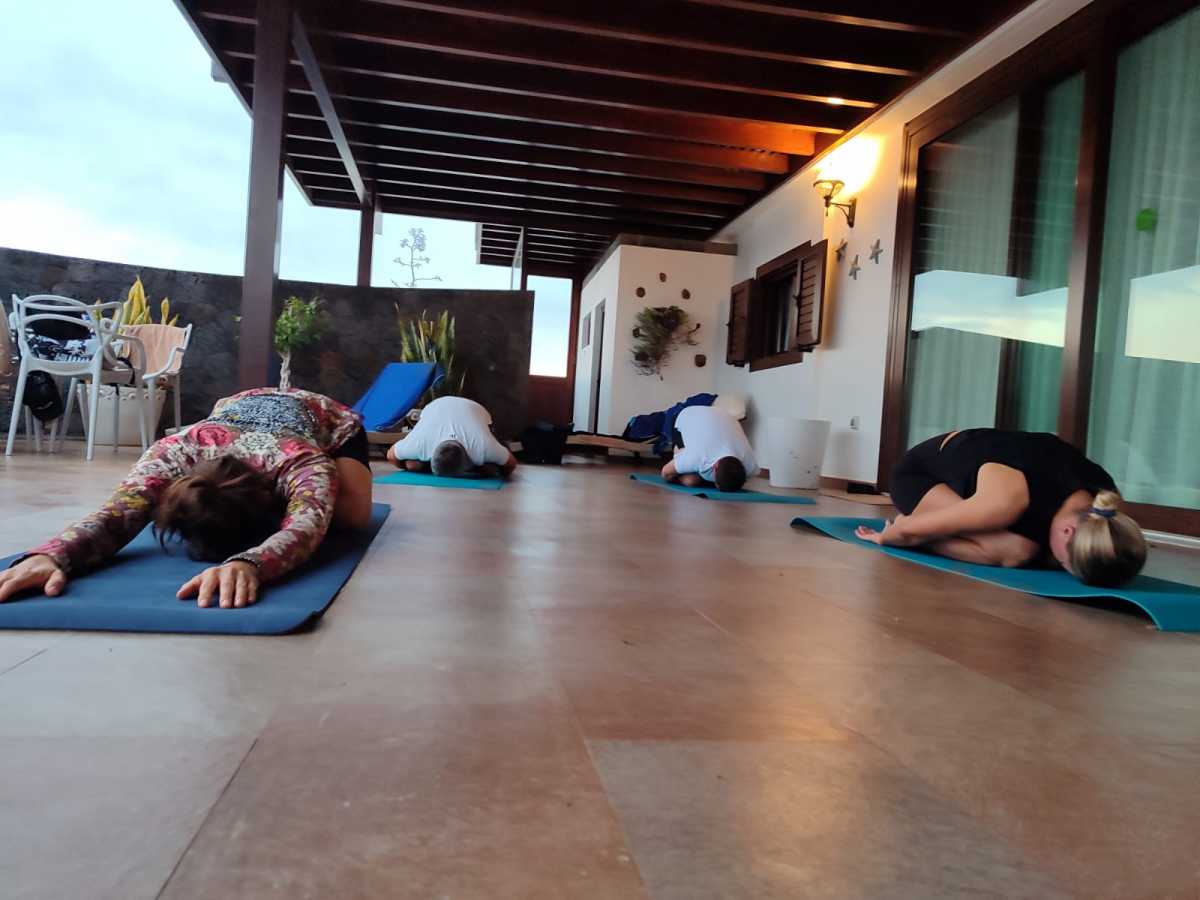
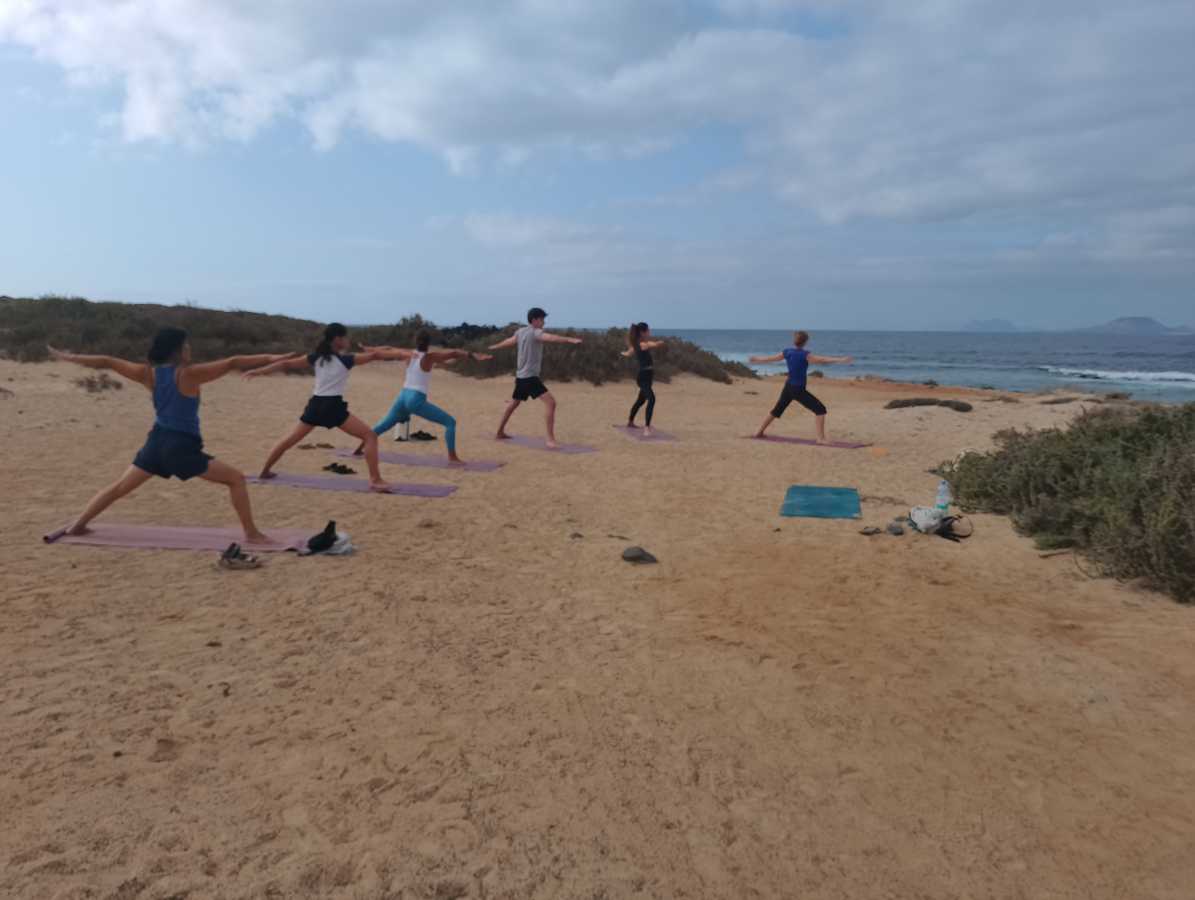




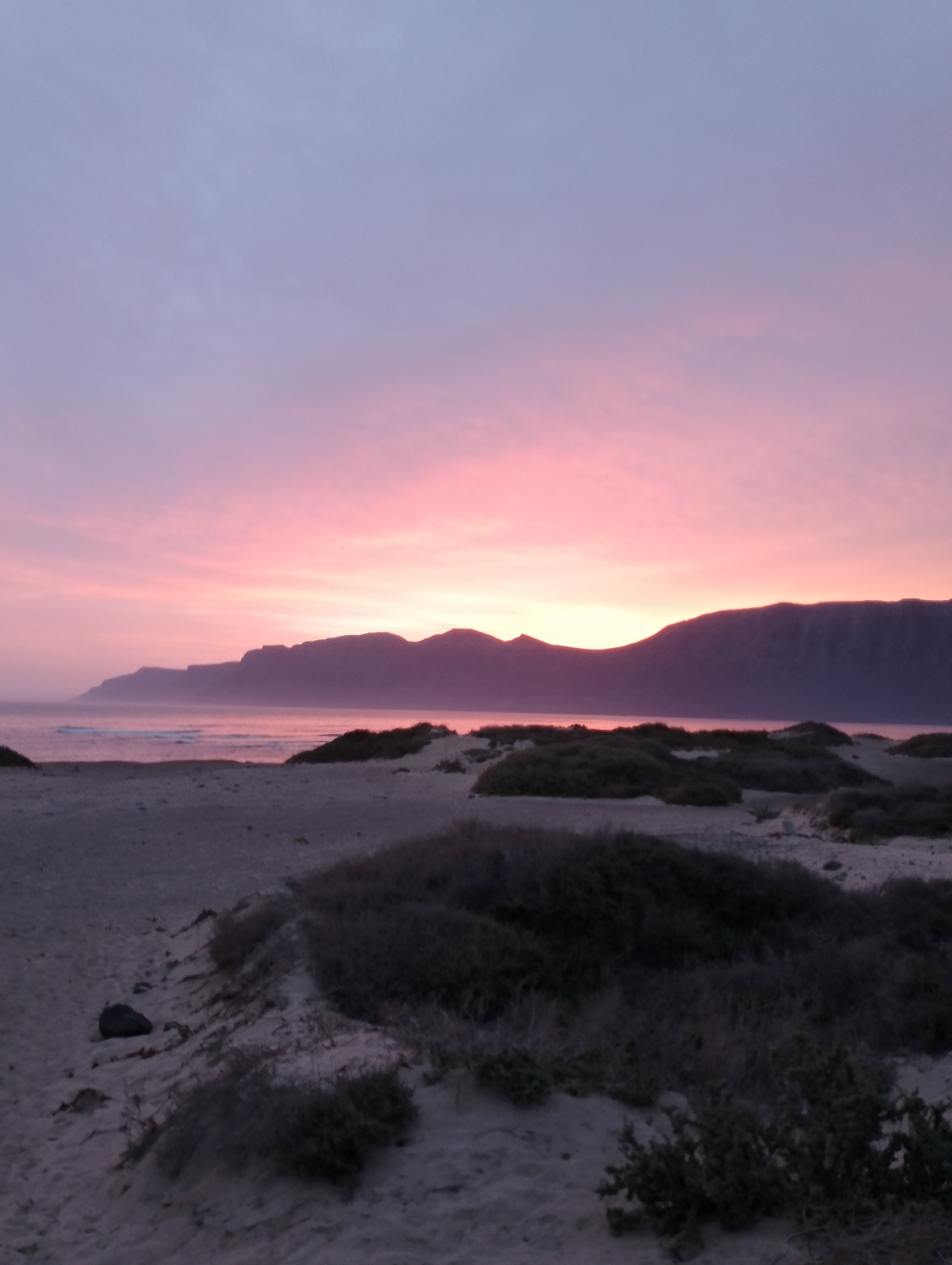



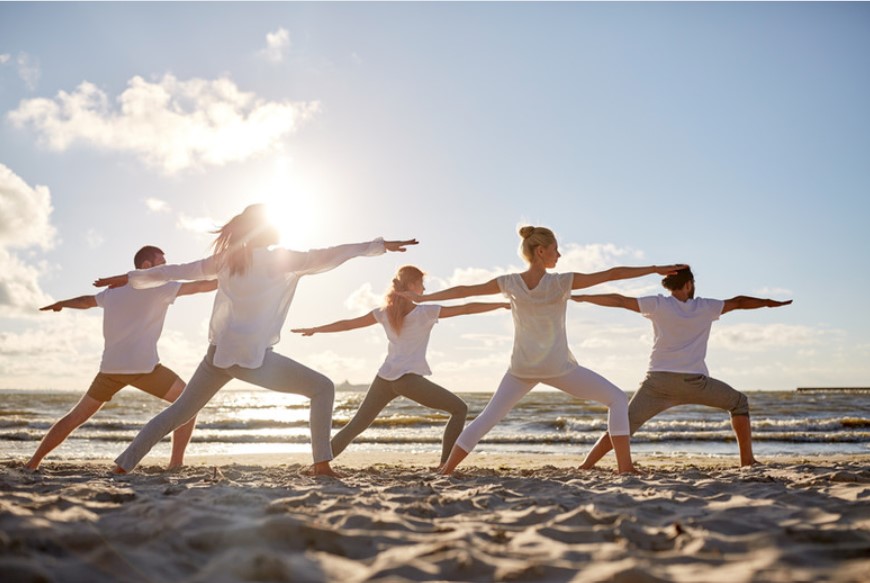
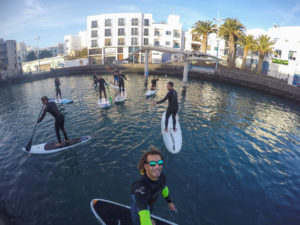
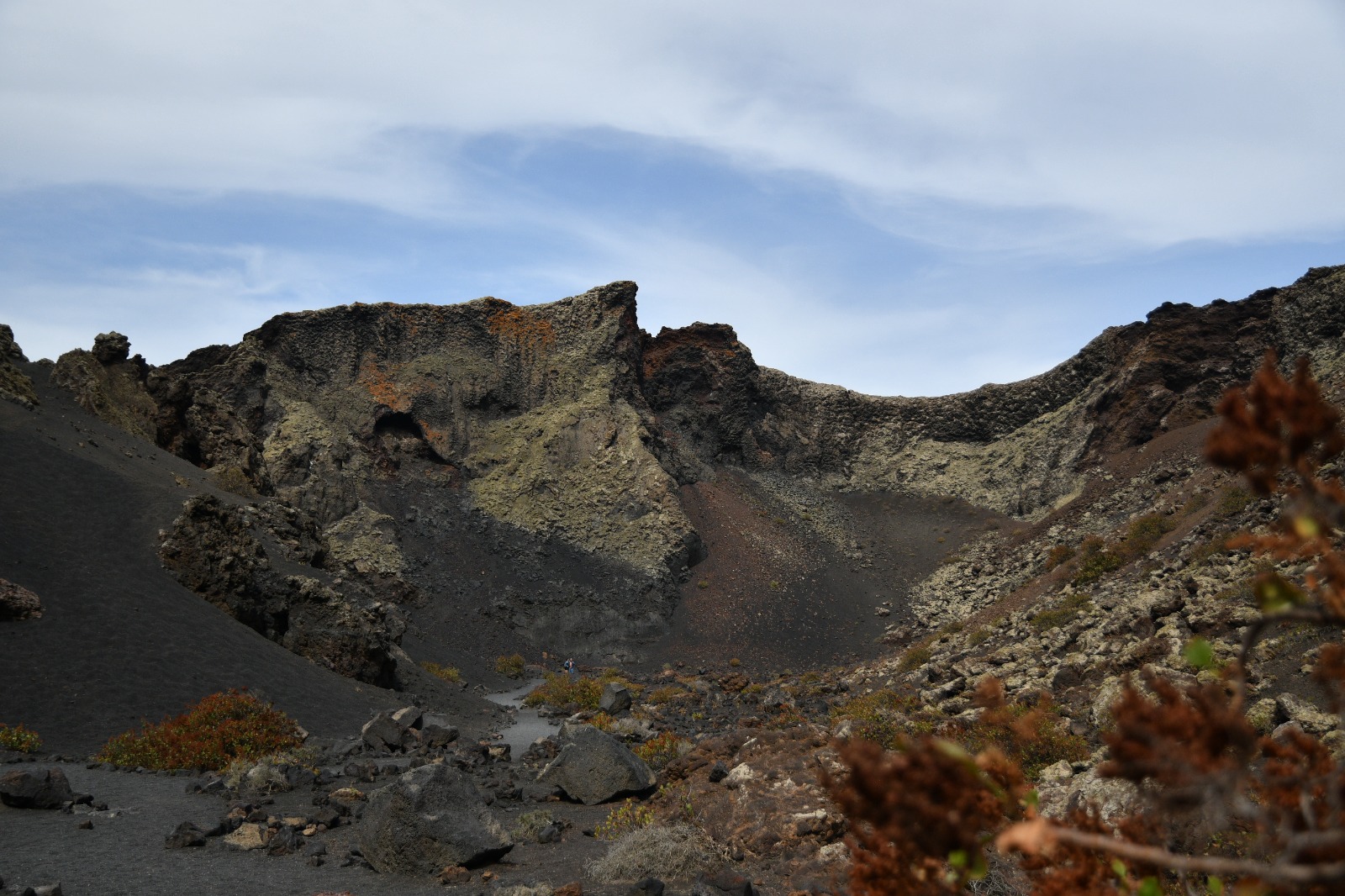


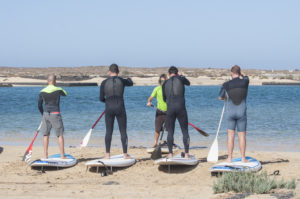



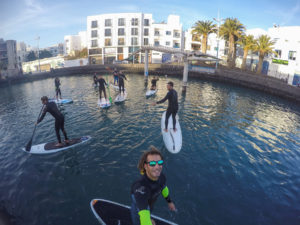


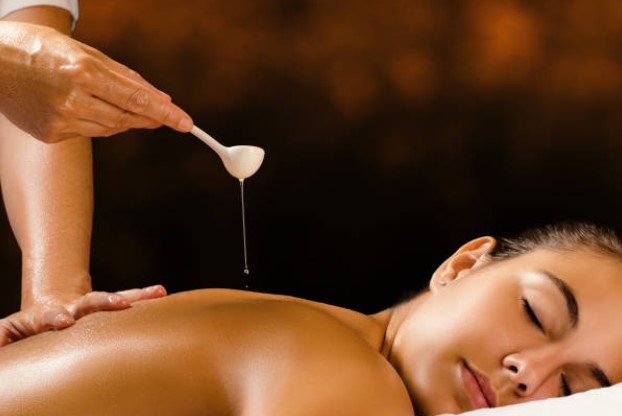



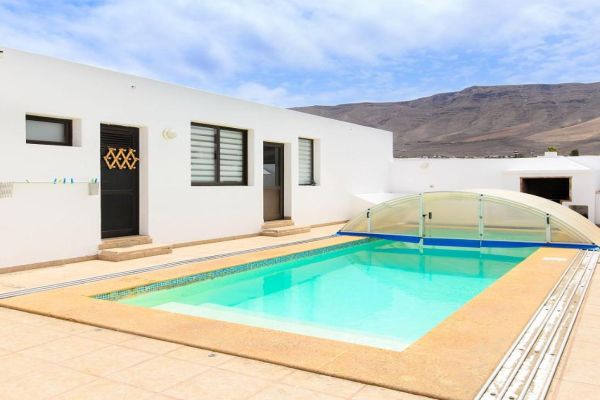


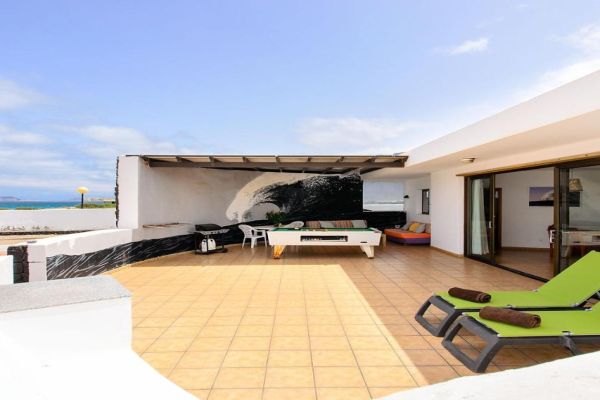




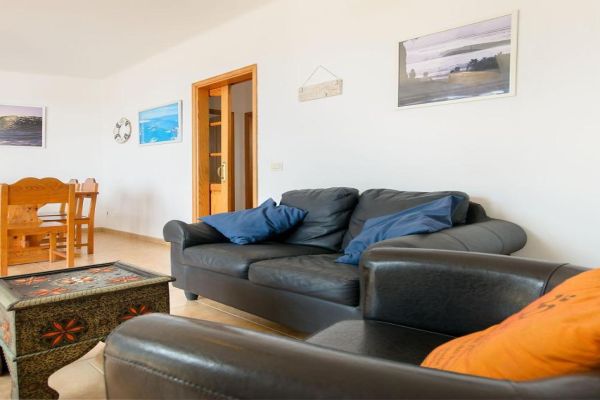
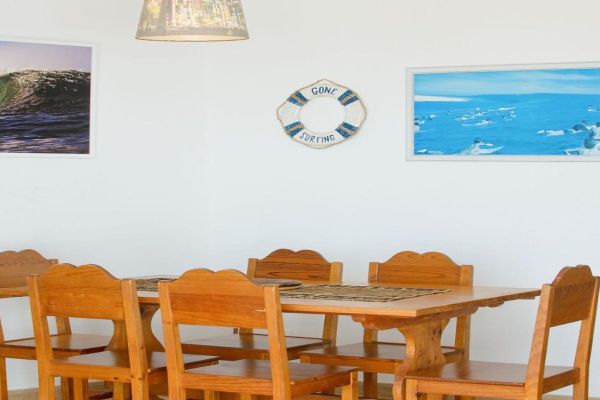

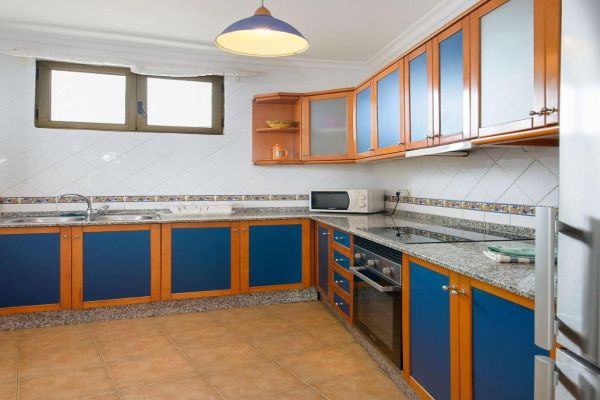
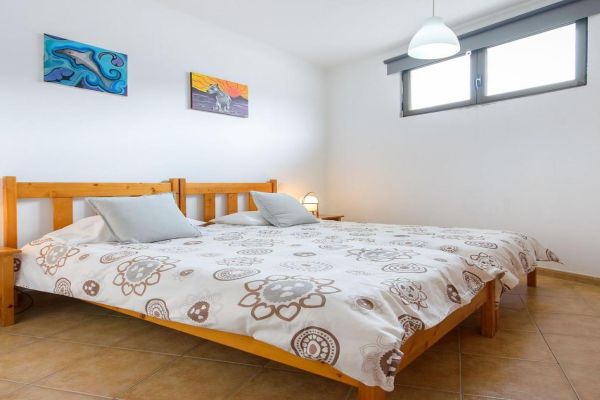

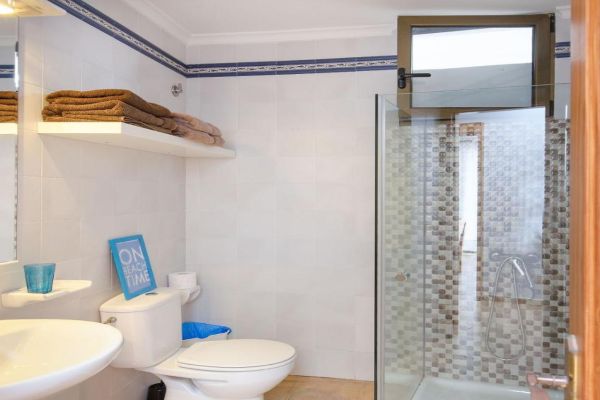
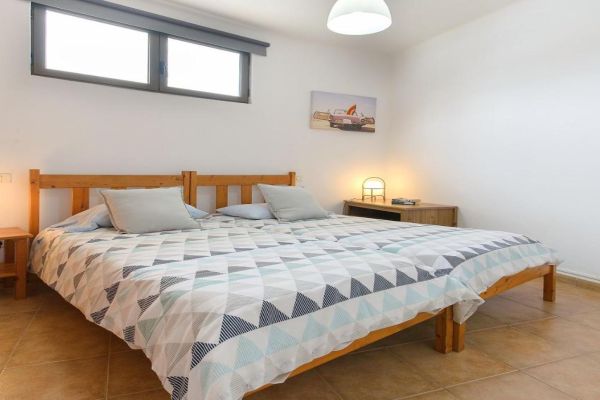
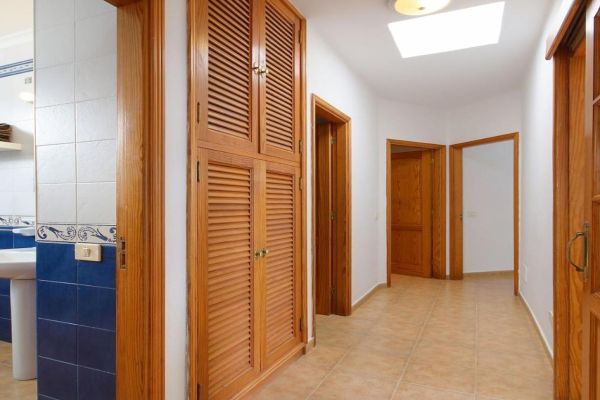

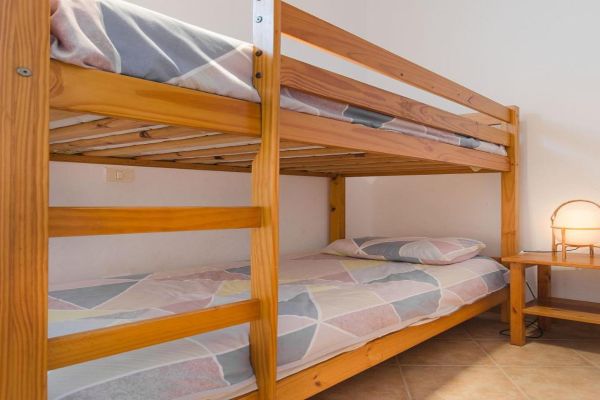




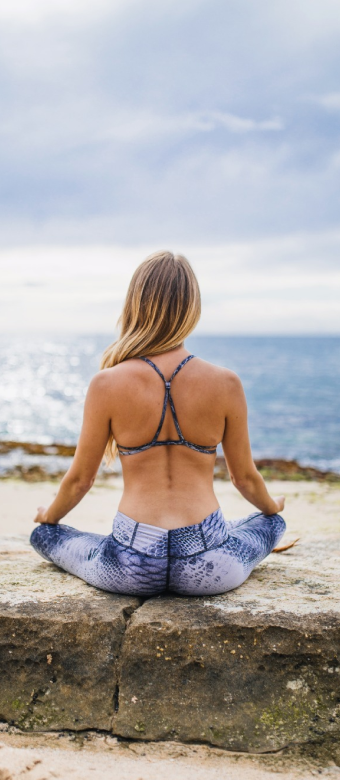
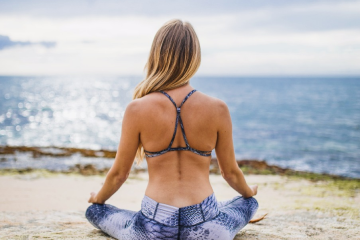

Ivana
Instructor
Ivana is from Sicily, South of Italy. She left her country 12 years ago. She has been living in France for some months, then she lived in UK for 4 years and at the moment she has been living in Lanzarote since January 2016. She fell in love with this wonderful and wild island. She has been studying and practicing yoga for 7 years and a half but she is constantly trying to improve and to add some more skills to this complete lifestyle, that is to say, yoga, that now for her is a total addiction! She would like to have some people at her camps to be able to spread the true yoga meaning!
Yoga
Meditation
Pilates and fitness
Detox
Surfing/SUP